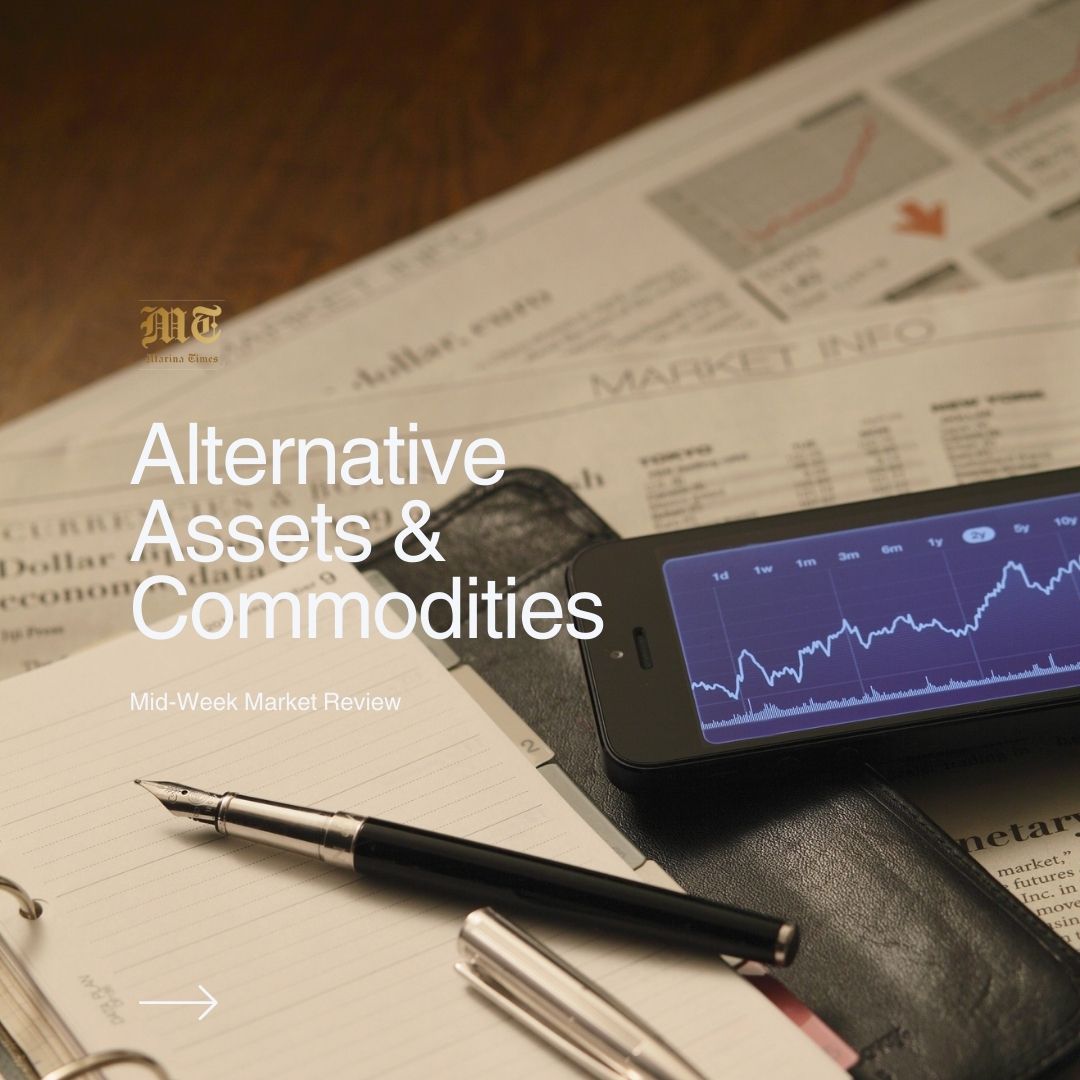

Oil prices experienced a marginal rebound on Friday, ending the week with little overall change as investors remained cautious. Brent crude futures rose 0.71% to settle at $70.65 per barrel, recovering slightly from the previous day’s 1.27% decline. Meanwhile, WTI crude gained 0.54% to close at $67.19 per barrel after a similar 1.27% loss on Thursday. These movements left both benchmarks only fractionally higher than their previous Friday closings, with Brent at $70.45 and WTI at $67.05.
On Monday, oil prices edged higher, with Brent gaining 0.7% to $71.07 per barrel and WTI rising 0.6% to $67.58 per barrel. The increase was driven by concerns over potential supply disruptions following U.S. military actions against Yemen’s Houthis in response to attacks on Red Sea shipping routes.
Additional support came from signs of improving economic conditions in China. Retail sales grew 4.0% year-over-year, up from December’s 3.7% increase, while industrial production expanded to 5.9% in the first two months of 2025, exceeding analyst forecasts of 5.3%.
Geopolitical uncertainties also continued to underpin prices. The potential for extended conflict in Ukraine remains a key concern, with upcoming discussions between Russian President Putin and the U.S. President expected to shape market sentiment in the days ahead.
Crude oil prices extended their decline on Wednesday, with WTI crude slipping toward $66 per barrel and Brent crude futures falling below $70 per barrel. The downturn was attributed to expectations of increased Russian oil exports, concerns over global economic growth, and rising US crude inventories.
The latest pressure on oil markets comes as diplomatic talks between US President Donald Trump and Russian President Vladimir Putin raised speculation about reduced sanctions on Russian fuel exports. As part of the discussions, Putin agreed to Trump’s proposal for a 30-day suspension of attacks on energy infrastructure in Russia and Ukraine.
Market analysts suggest that while an immediate surge in Russian crude supply is unlikely, a gradual increase over time could add to existing oversupply concerns. According to data from the US Energy Information Administration (EIA), Russia’s crude oil production in 2024 stood at approximately 9.2 million barrels per day (bpd), down from 9.8 million bpd in 2022 and a peak of 10.6 million bpd in 2016.
Beyond Russia, expectations of a production increase by OPEC and its allies (OPEC+) next month have added to bearish sentiment. If both Russia and OPEC+ ramp up supply simultaneously, the market could face prolonged oversupply, exerting additional pressure on prices.
Concerns over global economic conditions have also weighed on the oil market. The Organisation for Economic Co-operation and Development (OECD) has warned that recent US trade tariffs could slow economic growth in the US, Canada, and Mexico, potentially curbing energy demand. Meanwhile, industry data released earlier this week revealed a larger-than-expected build in US crude stockpiles, further highlighting sluggish demand.
Despite the downward pressures, ongoing geopolitical tensions in the Middle East have provided some support to oil prices. Potential US military action against Iran and Houthi attacks on Arabian Peninsula energy infrastructure could disrupt global crude supplies, potentially counterbalancing bearish factors.
Market sentiment remains divided, as crude prices briefly surged to a two-week high. The rally was fueled by concerns over supply disruptions and optimism over economic stimulus measures in China and Germany. However, prices later retreated as traders refocused on the broader supply-demand imbalance.
Looking ahead, energy consultancy Wood Mackenzie projects that Brent crude prices will average $73 per barrel in 2025, reflecting a $7 drop from 2024 levels. The anticipated decline is attributed to increased OPEC+ production, softer demand, and the ongoing impact of US trade policies.
While short-term volatility is expected to persist, the market faces strong downward pressure unless significant supply disruptions materialize. Traders and investors will closely monitor developments in US-Russia negotiations, OPEC+ output decisions, and geopolitical risks in the Middle East to assess the market’s next direction.
Over the past week, Bitcoin (BTC) has hovered around $83,000 and $84,000 with high volatility, while Ethereum (ETH) struggled below $2,000, reflecting broader market caution. Key events include Federal Reserve anticipation, institutional moves, and Ethereum’s structural challenges, setting the stage for potential shifts post-Fed decision on March 20.
BTC Price Breakdown (March 12–19, 2025)
Between March 12 and 19, Bitcoin fluctuated between $76,450 and $85,113, showing a net decline of approximately 4.2%. However, conflicting data from social media suggests a 3.14% gain. On March 12, BTC rallied to $83,786, a 5% rise from its $76,450 low, supported by bullish divergences and a rebound above $80,000 after clearing downside liquidity. By March 13, it dropped to $82,800, a 0.5% decrease, with a 7-day decline of 6.96%, reflecting cautious market sentiment following inflation data. On March 14, BTC reached $84,504, showing resilience despite a dipping Hope Metric (26.55 to 24.80), hinting at a potential pullback. It traded at $84,312 on March 15, buoyed by a $99 billion market surge following favorable U.S. inflation data. By March 17, it hit $83,271, up 3.14% over 7 days according to X posts, but struggled to break the $85,000 barrier amid institutional sell-offs and macro uncertainty. On March 18, it was around $83,698, down 0.7% in 24 hours, constrained in an 8% channel between $76,000 and $84,472. As of March 19, BTC is estimated to be near $83,000–$84,000, with resistance at $85,000 and support at $80,000, awaiting the outcome of the Fed meeting.
ETH Price Breakdown (March 12–19, 2025)
From March 12 to 19, Ethereum experienced a volatile ride, trading between $1,845 and $1,950. On March 12, ETH traded at $1,880, down 3.5% in 24 hours, with ETH/BTC at multi-year lows, reflecting a structural decline. By March 13, it fell to $1,845, part of a broader altcoin slump, with 7-day losses steeper than BTC’s. On March 14, ETH recovered to $1,924.30, supported by whale activity and bullish whispers, though macro hurdles remained. By March 15, it was around $1,900, consolidating below $2,000 after failing to break resistance. On March 17, ETH dropped to $1,898, down 6.06% over 7 days per X posts, despite a 1.7% daily gain to reclaim $1,900 amid optimism from the Hoodi update. On March 18, it slipped to $1,907, a 1% decrease in 24 hours, with $30.21 million in futures liquidations signaling volatility. As of March 19, ETH is estimated to be between $1,900 and $1,950, with resistance at $2,000 and support at $1,800, awaiting clarity from the Fed.
Trend: ETH declined ~1.7% to 6.06% over seven days, underperforming BTC, with prices stuck below $2,000 amid mixed catalysts like ETF speculation and a slashed 2025 price target from $10,000 to $4,000 by Standard Chartered.
Market Movements: Crypto market cap fell from $3.23 trillion (March 10) to $2.72–$2.74 trillion, with a $99 billion mid-week surge after U.S. inflation eased, though BTC-spot ETF outflows hit $945 million.
Fed Focus: The Federal Reserve’s March 18–19 meeting looms large, with expectations of unchanged rates but potential for 2–3 cuts later in 2025, impacting crypto sentiment.
Institutional Activity: MicroStrategy bought $10.7 million in BTC (130 BTC), while 21 Shares liquidated two BTC/ETH futures ETFs amid a downturn.
Ethereum Updates: The Hoodi update spurred ETH optimism, but Layer 2 growth (e.g., Coinbase’s Base) reduced ETH’s market cap by $50 billion, per Standard Chartered.
Regulatory News: Trump’s SEC Chair pick Paul Atkins’ confirmation is set for March 27; Russia is using BTC/ETH to skirt sanctions, and its central bank opened crypto trading to select investors.
Other Developments: Solana futures ETF talks gained traction, gold hit $3,000, and altcoins like XRP (+9.10%) and BNB (+13.53%) outperformed BTC/ETH.